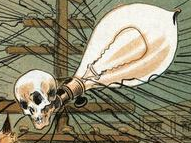Seeds shouldn’t be covered by patents. When you buy a patented item from a patent holder (or a manufacturer that licensed the patent) then First Sale Doctrine says that you can do whatever you want with it without needing to pay for a patent license. In the case of a seed, that means you could resell it to someone, you could roast and eat it, or you could plant it in the ground. But unlike other inventions, a seed’s purpose is to create more of itself. By buying a seed, you are implicitly buying the ability to make more seeds. If First Sale Doctrine allows you to use the patented product how you want, then it allows you to grow more seeds, because that’s just what seeds do.
I think most of these seeds are modified in a way that they don’t reproduce. This is what creates the dependency of farmers, they have a well growing plant with good harvest, but need to buy the seeds year for year.
The problem discussed in the article is that people that develop new plants are working under a high uncertainty, as big cooperations have patented a variety of plants and could make claims that some of their “inventions” have been used to develop new one or that new development look the same than their patented “development”.
I think patents were a good idea then we used to have many small companies. But in today’s economy it is overly used and slowing down innovation instead of making innovation attractive for inventors.
It’s 2024, we need opensource seeds now and seed piracy.
seed piracy
Is that the opposite of edging?
🖕⬆️
I agree with everything you’ve said, but modern technologies aren’t the only issue. The fact is that many food crops are hybrids that don’t breed true, and it’s been like that for many decades. That is, you can save seeds, even legally, but within one or two generations the plants revert to form, losing their desired characteristics and “hybrid vigour”.
To the best of my knowledge, there is no such thing as a GMO wheat. Yet saving seed at scale hasn’t been viable since at least the 1960s.
This seems logical.
This is the best summary I could come up with:
Using an organic farm system, 68-year-old Morton developed entirely novel lettuce varieties and eventually started the Philomath, Oregon-based Wild Garden Seed company with his wife, Karen.
The customer planned to include “Funny Cut Mix” in their lettuce trials, which plant breeders use to evaluate how well a variety will perform in a specific environment.
A few months later, the customer informed Morton that his “Funny Cut Mix” would be excluded from further trials because it looked like a patented lettuce type called Salanova, owned by the Dutch company Rijk Zwaan.
The system rewards powerful firms with the resources to develop and enforce patents, explained Phil Howard, a professor in the department of community sustainability at Michigan State University.
The company acts as a marketing hub where small-scale farmers can sell packs of seed and receive the majority of the packet sale money in return, minus the cost of production.
Unfortunately, today farmers don’t always have robust choices – a challenge that was recognized in the Biden-Harris executive order on competition,” Jenny L Moffitt, under secretary for marketing and regulatory programs, said in an email statement.
The original article contains 1,576 words, the summary contains 185 words. Saved 88%. I’m a bot and I’m open source!
None of this is nature’s work at all.






